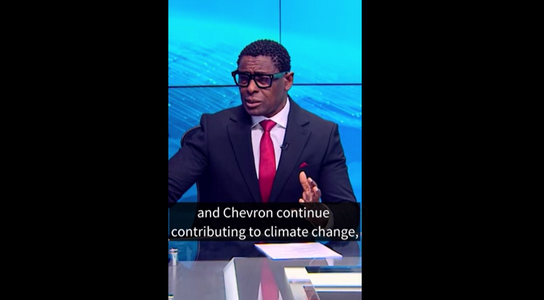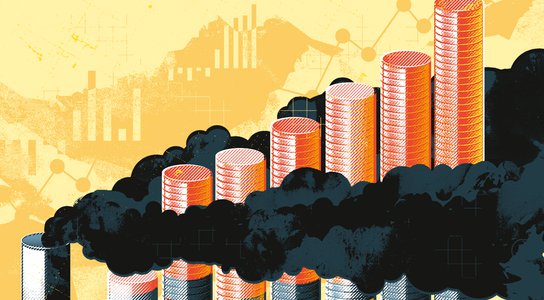‘Natural gas’ has long been touted by the fossil fuel industry as clean, green and an answer to our climate-woes. But gas is a fossil fuel and we see right through that greenwashing – which is why we prefer to call it ‘fossil gas’.
One type of fossil gas you may have heard a lot about is liquefied fossil gas, also referred to by the industry as liquefied natural gas or LNG. Liquefied fossil gas is an important part of the fossil gas industry because it has been rapidly increasing over the last decade, and risks driving evermore irreversible climate damage.
How LNG is formed
Liquefied fossil gas is formed when fossil gas is supercooled into its liquid state at about -260 degrees Fahrenheit (-160°C), a process known as liquefaction. It is then loaded onto huge tanker ships or trucks and exported abroad, where it is returned to its gaseous state in the process of regasification. It can then be transported as fossil gas through pipelines and burned in power stations, home boilers or used in industry.
In the US, a huge depository of cheap shale gas along with the lifting of a crude oil export ban in 2015 sparked a mad dash among fossil fuel companies to cash in on the export of liquefied fossil gas from the US. Companies are rushing to buildout gas export terminals, where liquefaction can take place, with a slew of projects currently in various stages of development.
Alarmingly, this buildout of polluting projects is being concentrated in the US Gulf Coast, where residents of color have already borne the costs of environmental racism and decades of industrial pollution. New gas export terminals risk polluting the air and waterways, undermining the health and safety of nearby communities, and devastating local jobs reliant on the natural environment.
Why is LNG a looming climate disaster?
The growing trade of liquefied fossil gas enables fossil fuel companies to pursue new markets for their climate-wrecking products at the very moment when the world is attempting to transition away from fossil fuels. Until recently, gas could only be used where there was a network of pipelines from where the gas was extracted to where it was used. But now the growing trade of liquified fossil gas enables this climate-wrecking fossil fuel to be transported to almost any country around the world.
The fossil fuel industry and its enablers try to get away with positioning liquefied fossil gas as a climate solution, as it releases less carbon dioxide than coal – the most polluting fossil fuel. The American Petroleum Institute, the leading trade group for US fossil fuel companies, advertises that liquefied fossil gas exports from the US represent a ‘critical step’ in addressing the global challenge of climate change. And the Biden administration, despite its climate pledges, has appeared content with parroting industry talking points regarding the supposed benefits of gas exports.
This fossil gas growth is incompatible with a healthy climate. In order to achieve the Paris Agreement goal of keeping warming under 1.5 degrees Celsius – a goal scientists warn must be achieved to avoid the worst impacts of the climate crisis – gas production and consumption must drop by 40% worldwide over the next decade. Yet in a vicious cycle, increasing US gas exports promotes new gas production, and new gas production drives an expansion of gas exports.
Remember, the fossil gas industry leaks methane into the atmosphere at almost every step in the supply chain. Methane is a greenhouse gas that is, in the short term, over 80 times more potent than carbon dioxide and has also driven more than a quarter of global warming to date.
Swapping fossil gas for coal in emerging markets isn't going to cut it, either: a 2020 Bloomberg analysis showed the operation of all export terminals under consideration at the time would have the potential carbon dioxide emissions rivaling those of coal.
In the world’s leading assessment of climate research, the IPCC report released earlier this year reiterated the urgency of slashing greenhouse gas emissions in a rapidly heating world. It was cited by the UN chief as signaling a “death knell” for fossil fuels. That means urgently phasing out climate-wrecking fossil gas in its various forms – including liquefied fossil gas.


